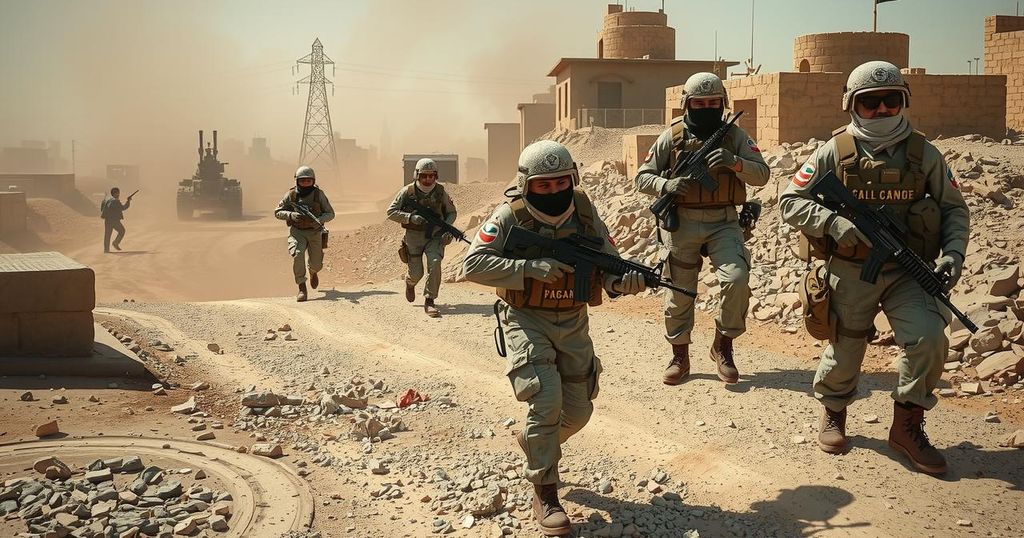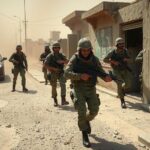Syria Civil War: Rebel Forces Report Advancements into Damascus and Key Cities
Rebel forces have claimed significant gains in Syria, capturing several cities and reportedly pushing into Damascus. The Islamist group HTS announced its control over key locations, raising concerns about the sustainability of President Assad’s regime. The Syrian army’s retreat signifies the shifting power dynamics in the conflict, eliciting various responses from international actors and experts on the future implications of these developments.
Rebel forces in Syria have reported significant advancements, claiming control of multiple cities, including Homs, Daraa, Quneitra, and Sweida, within a short timeframe. Early Sunday, the Islamist group Hayat Tahrir al-Sham (HTS) announced their entry into Damascus, reaching the notorious Sednaya prison, which has been labeled as a “human slaughterhouse” by Amnesty International. HTS leader, Abu Mohammed Al-Jolani, stated that government troops retreated without resistance, signaling a worrying trend for President Bashar al-Assad’s regime.
As these developments unfold, the Syrian army has reportedly withdrawn from much of southern Syria, allowing the rebels to gain control over two provincial capitals. The Syrian government’s attempts to quell rumors regarding Assad’s potential flight from the country further indicate the regime’s precarious situation. In response to these events, former President Donald Trump expressed on his platform that the U.S. should remain uninvolved, suggesting that the situation in Syria is not a priority for American interests.
Furthermore, Russian Foreign Minister Sergey Lavrov stated his country would oppose the rebel advance while also promoting dialogue between the government and opposition. Experts, such as Javed Ali from the University of Michigan, have described these developments as a catastrophic loss for Iran and a warning sign for Russia, which has traditionally supported the Assad regime. Ali has cautioned that if withdrawals of Iranian and Russian advisors continue, the Syrian military would likely struggle against the advancing rebel forces.
The Syrian civil war has persisted since 2011, following a wave of protests against President Bashar al-Assad’s government. Initially a movement for democratic reform, the conflict escalated into a multi-faceted war involving various opposition groups, foreign interventions, and proxy conflicts, resulting in a catastrophic humanitarian crisis. The key players include the Assad regime, rebel factions such as HTS, and international actors such as Russia and the United States, each pursuing different agendas in the region. Recently, HTS and other groups have intensified their efforts against the dwindling government forces, highlighting the shifting dynamics and challenges faced by Assad’s regime amidst ongoing hostilities.
The recent rebel offensives in Syria, particularly the advances into Damascus and other significant cities, illustrate a pivotal moment in the ongoing civil war. With the military situation increasingly precarious for the Assad regime, international responses, including those from the United States and Russia, could shape the course of events. The withdrawal of foreign support could lead to further destabilization, potentially allowing insurgent groups to exert greater influence over Syria’s future. As the situation develops, the implications for regional stability and humanitarian conditions in the country remain dire.
Original Source: abcnews.go.com








Post Comment